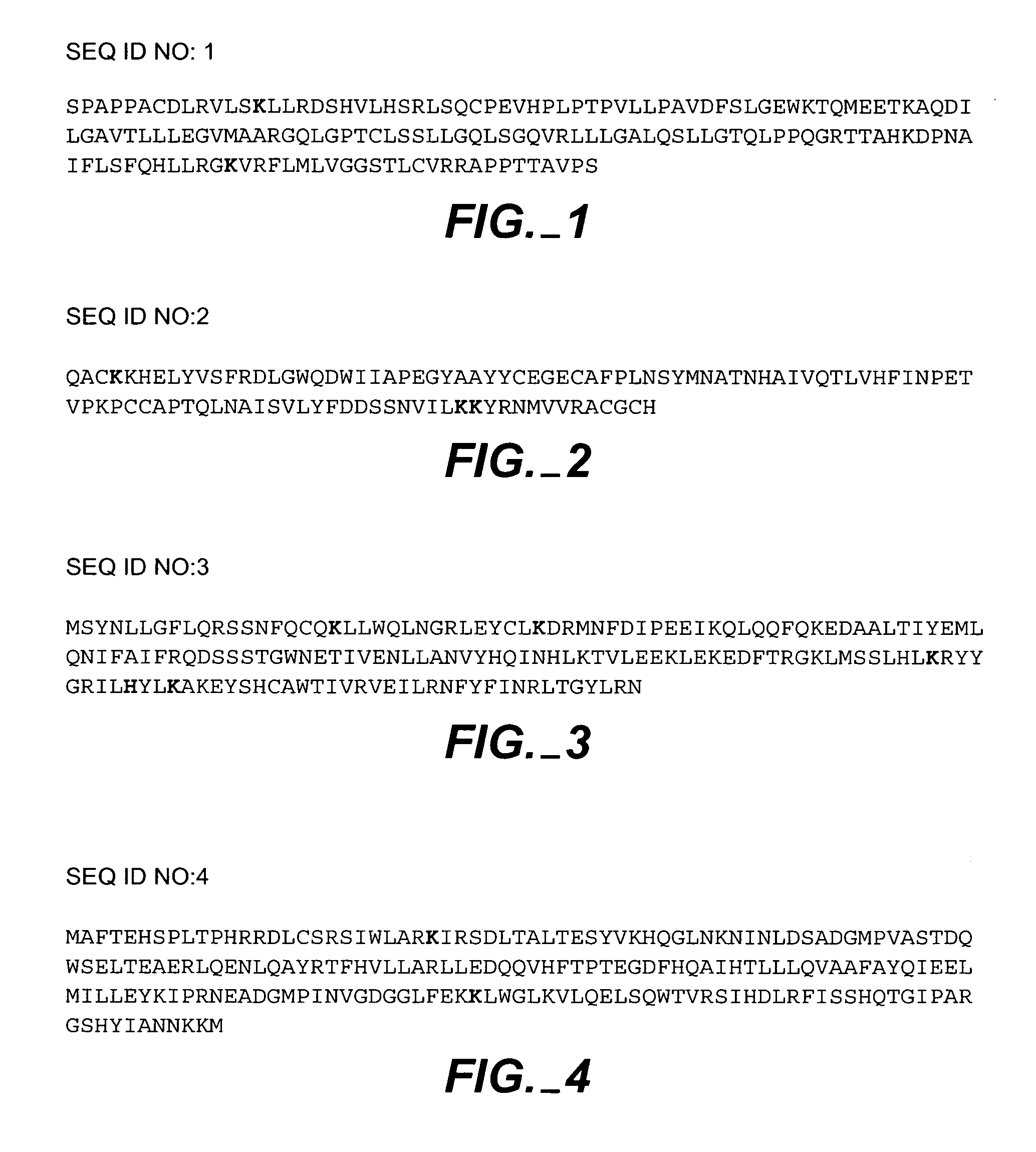Generating protein pro-drugs using reversible PPG linkages
a protein prodrug and ppg technology, applied in the direction of antibody medical ingredients, peptide/protein ingredients, pharmaceutical non-active ingredients, etc., can solve the problems of unwanted immunogenicity of the therapeutic, protein therapeutics acting as growth factors may induce unwanted proliferation or differentiation of cells at or close to the site of administration, etc., to reduce or block the activity of a protein therapeutic and reduce side effects
- Summary
- Abstract
- Description
- Claims
- Application Information
AI Technical Summary
Benefits of technology
Problems solved by technology
Method used
Image
Examples
example 1
Reversible PEGylation of Interferon-Beta
[0097] Production of Interferon Beta in E. coli
[0098] Sequence verified clones in pET28a were transformed into BL21(DE3) star cells (commercially available from Invitrogen) and cultures were grown in auto-inducing media, a rich medium for growth with little or no induction during log phase and auto-induction of expression as the culture approaches saturation. Media components include 25 mM (NH4)2SO4, 50 mM KH2PO4, 50 mM Na2HPO4, 1 mM MgSO4, 0.5% glycerol, 0.05% glucose, 0.2% alpha-lactose, 0.1% tryptone, and 0.05% yeast extract. The cultures were grown for 7 hours to an OD between 4 and 5 and cells harvested by centrifugation. Cells were lysed by sonication, inclusion pellets denatured in 8M guanidine HCl and bound to a column containing Ni-NTA resin. A dilution series of guanidine HCl with decreasing pH was used to purify and refold the protein.
[0099] An alternative method for purification of clones with and without the N-terminal 6-His ta...
example 2
Characterization of the Protein-PPG Conjugate
[0102] Generation of de-PEGylated Material
[0103] PEGylated interferon beta will be de-PEGylated by reducing the buffer pH to 5.0 and stirring for one hour.
[0104] Activity Assays
[0105] A standard ISRE (interferon-stimulated response element) reporter assay will be used to determine the activity of unreacted interferon beta, PEGylated interferon beta, and de-PEGylated interferon beta. In this assay, 293T cells which constitutively express the type I interferon receptor will be transiently transfected with an ISRE-luciferase vector (pISRE-luc, commercially available from Clontech). Twelve hours after transfection, the cells will be treated with a dilution series of concentrations for each interferon beta species. Proteins which bind the interferon receptor and trigger the JAK / STAT signal transduction cascade activate transcription of the luciferase gene operably linked to the ISRE. Luciferase activity will be detected using the Steady-Gl...
PUM
| Property | Measurement | Unit |
|---|---|---|
| Pharmaceutically acceptable | aaaaa | aaaaa |
| Immunogenicity | aaaaa | aaaaa |
| Covalent bond | aaaaa | aaaaa |
Abstract
Description
Claims
Application Information
 Login to View More
Login to View More - R&D
- Intellectual Property
- Life Sciences
- Materials
- Tech Scout
- Unparalleled Data Quality
- Higher Quality Content
- 60% Fewer Hallucinations
Browse by: Latest US Patents, China's latest patents, Technical Efficacy Thesaurus, Application Domain, Technology Topic, Popular Technical Reports.
© 2025 PatSnap. All rights reserved.Legal|Privacy policy|Modern Slavery Act Transparency Statement|Sitemap|About US| Contact US: help@patsnap.com

